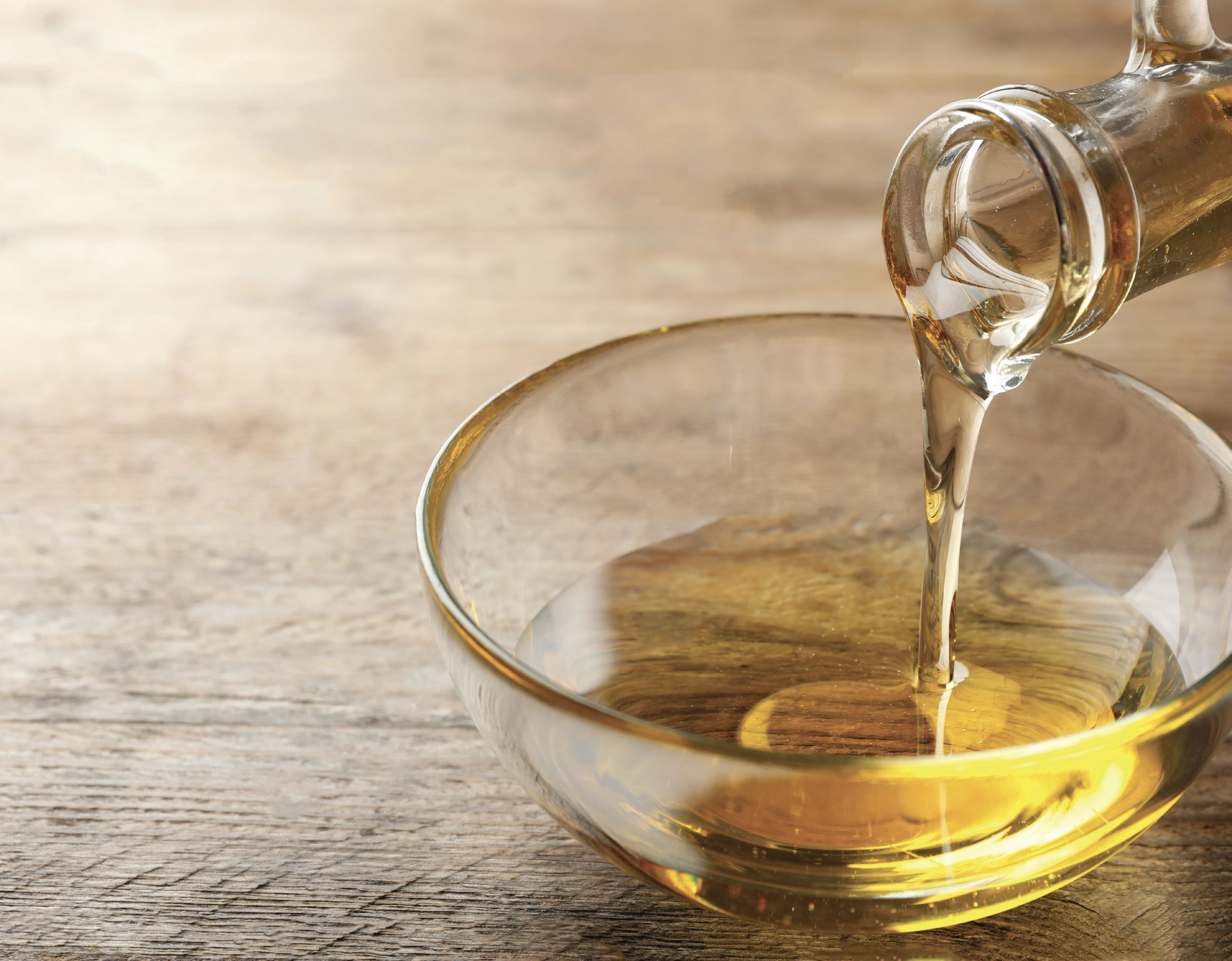Vegetable oils under a microscope
By Dr. Selim Erhan, TLT Editor | TLT From the Editor February 2023
A closer look at the chemical structure of plant oils reveals more than the obvious advantages.

All around us there is an increasing momentum toward building a more sustainable future. Governments are putting together programs; companies are looking into ways to contribute by looking at renewable sources and reducing their energy use and their carbon footprint. Individuals are valuing recycling maybe more than before.
When we look at renewable resources for our raw materials or our finished products, vegetable oils appear very high on the list. They are renewable, are functional, they get manufactured by nature—which is very consistent—and they cost less than synthetic molecules. However, when we look more carefully, we see further advantages besides the immediately obvious ones. First, we see a very diverse family of triglycerides that have a variety of highly functional esters, fatty acids and hydroxy fatty acids. Some are not even triglycerides but mono esters, like jojoba oil, the same oil that is found in sperm whale oil. The plants use the oil they make as an energy source. On the other hand, in nature every creation produces something for others to use, so from that point of view these oils are made for us and, therefore, deserve a very close look for our sake.
The plant uses a triglyceride structure to optimize space. The carbon atoms are lined to form chains and are capped with carboxylic acid groups. Three such chains are attached to a glycerin molecule that has three hydroxyl groups to form three ester groups close to each other. This structure is compact and allows the plant to store many hydrocarbons in a tight space. Colder climates require more energy, so these chains are kept longer, about 18 to 22 carbons long. In the tropics the chains are shorter, mostly eight to 12 carbons long. This variety lends itself to some unique applications. In lubrication we need a barrier film between two sliding surfaces. If this barrier film is made from spaghetti-like long chains, the sliding surfaces will always find a portion of the chain, so there will be less chance for surface-to-surface contact. Hence, the plant oils that have chains that are 16-22 carbons long have use in lubrication.
Before we come to the shorter chain triglycerides, I want to shine light on another powerful advantage these plant oils bring, which are the double bonds that the plants synthesize and place on these chains. In synthesizing, the least energy requiring structure is to put the two large groups, which are the portions of the chain, on either side of the double bond, as far away from each other as possible. This is known as the trans configuration. It doesn’t crowd the groups. But the plant forces the two large sections of the chain to be closer to each other, which we call a cis configuration. This requires more energy but brings additional advantages. One such advantage is to lower the freezing point of the oil, which makes it accessible for use at lower temperatures. The cis configuration forces the chain to bend. As you can imagine, fatty acid chains that have two or three double bonds have quite a bend. This prevents the chains from stacking up and allows the oil to stay fluid at much lower temperatures. These bends bring additional advantages. They absorb energy when weight is put on them, like the arch in the soles of our feet. This adds power to their lubricity. They also can absorb oxygen, so if one wants a sacrificial molecule that will easily oxidize, one can choose a plant oil with a lot of unsaturation. If the triglyceride is highly unsaturated the molecules will polymerize very quickly to form protective layers. Linseed oil is such an oil and is widely used in wood preservation, strengthening veneers in furniture making and used in coatings to dry the coating on a surface.
Vegetable oils, being esters, have high solvency and polarity. These molecules have a strong electron density at one end and more neutral hydrocarbon chains on the other end. They can bring polar and non-polar groups together and move them harmoniously. When these chains have double bonds, which force the chain to bend, the bent chains can bring along other molecules creating an “entanglement” action. This significantly increases the solvency of these fluids.
Plants that are in the tropics do not have to fight against cold temperatures. Therefore, they have mostly saturated straight chains that are easily stackable and so are more dense and solid at room temperature. Candle makers love this structure. Most of us don’t realize how complicated a candle structure can be. The wax, which is the stacked chains, can melt fast or slow depending on the length and structure of these chains. A harder wax on the outside but a softer one close to the wick keeps supplying liquid oil to the wick but protects the shape of the candle and prevents it from burning very fast!
These short and straight chains will bunch up into spheres when in water. So, groups like surfactant makers and personal care formulators cleave off these chains to free the carboxylic acid group and convert it to a soap. These soaps in water will form spherical or elongated structures we call micelles. These structures can now house a variety of organic molecules. They are used in a variety of applications such as carrying away oily residues or delivering pharmaceuticals or fragrance molecules!
In short, under a microscope, there is a very colorful picture for a chemist, a world where they can find a lot of advantages and a very wide variety of vegetable oils to provide whatever advantage is needed.
Dr. Selim Erhan is director of business development for Process Oils Inc. in Trout Valley, Ill. You can reach him at serhan@processoilsinc.com.